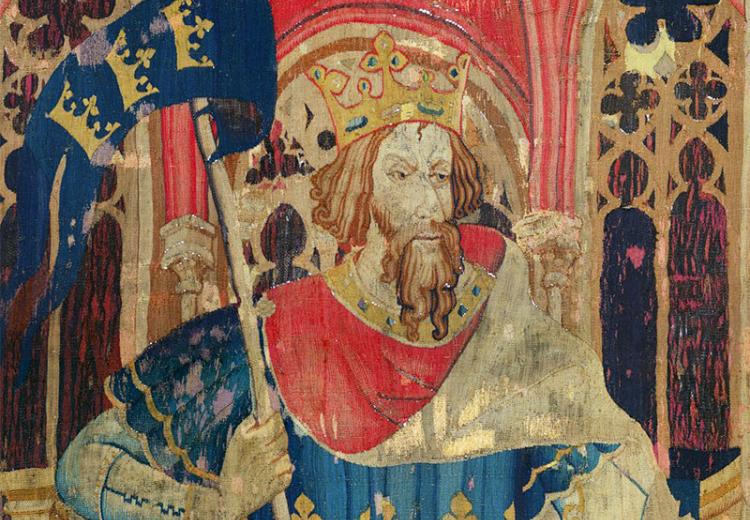Exploring Arthurian Legend

King Arthur as one of the Nine Worthies, detail from the "Christian Heroes Tapestry" in The Cloisters, New York.
This lesson explores the growth and transformations of the stories surrounding King Arthur beginning with the period when we first become aware of them as part of the oral tradition in Medieval Europe, follows them as they develop to become important literary works such as Christopher Malory’s Le Morte D’Arthur in Renaissance England and Alfred, Lord Tennyson’s Idylls of the King in Victorian England, and concludes with a look at them as we find them in modern works such as T.H. White's Once and Future King and the musical Camelot. By looking at the way these stories are presented, both in literature and in the visual arts, students will learn about the cultures that preserve them. As these stories pass from generation to generation, the border between fact and fiction becomes blurred. The stories themselves have a history and in their evolving shape carry the imprint of all the hands though which they have passed. Using the Internet, students can track the growth of a legend like that of King Arthur, from its emergence in the so-called Dark Ages to its arrival on the silver screen.
Guiding Questions
How does the growth of King Arthur's legend reflect the literary and cultural growth of England as a nation?
How does close reading of a specific segment of the King Arthur legend help us understand literary and cultural changes?
Learning Objectives
Discuss the historical origins of the Arthurian legends.
Articulate how medieval, Victorian, and modern historians and storytellers reflected the concerns of their own times in their treatment of the legends.
Understand the use of literature as historical evidence.
Compare the different literary forms writers have used to present Arthurian legends for different audiences.
Describe how artists have visualized the characters and objects portrayed in the legends.
